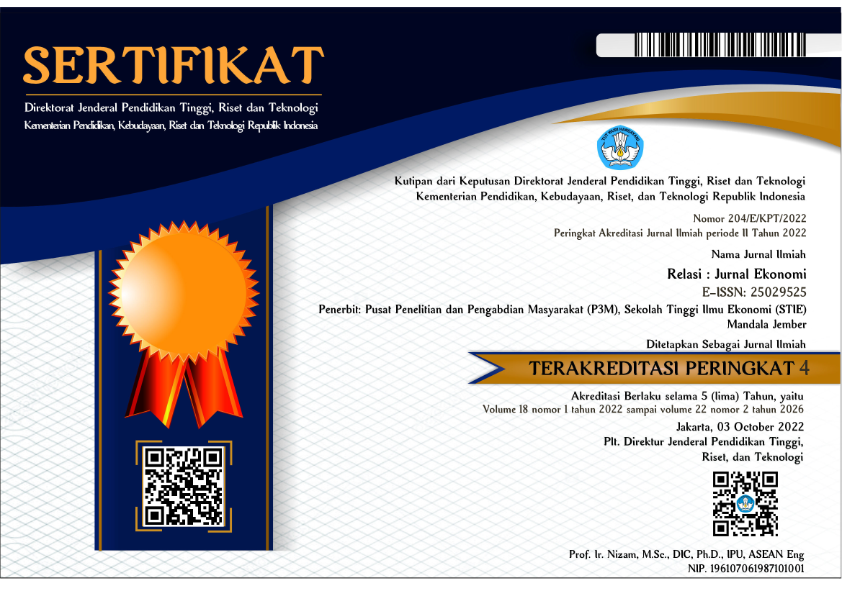Fraud Triangle Risk Factors Affecting Fraud Financial Statements
Abstract
This study aims to determine the influence of the fraud triangle risk factor on financial statement fraud. In the fraud triangle theory, there are three conditions that are always present in every fraud incident. The three conditions are pressure, opportunity and rationalization. Financial statement fraud in this study is proxied by earnings management. The research was quantitative, with seven independent variables consisting of four pressure elements (financial stability, external pressure, financial target, and personal financial need), two opportunity elements (nature of industry and effective monitoring), and one rationalization element (change in auditor). Meanwhile, financial statement fraud was used as the dependent variable. The companies listed in the Jakarta Islamic Index from 2018 to 2020 make up the study's population. Purposive sampling was used to select the sample, and a total of 21 companies were included in the research sample. Multiple linear regression analysis was used, as well as hypothesis testing with the t test, F test, and coefficient of determination. The results showed that the external pressure variable which was proxied by LEV had a significant negative effect on financial statement fraud, the change in auditor variable which was proxied by the dummy variable had a significant positive effect on financial statement fraud. Meanwhile, the financial stability variable proxied by ACHANGE, financial target proxied by ROA, personal financial need proxied by OSHIP, nature of industry proxied by RECEIVABLE and ineffective monitoring proxied by BDOUT have no effect on financial statement fraud.
Keyword: Fraud, Triangle, Risk, Financial Statement
Copyright (c) 2022 RELASI : JURNAL EKONOMI

This work is licensed under a Creative Commons Attribution-NonCommercial-NoDerivatives 4.0 International License.






